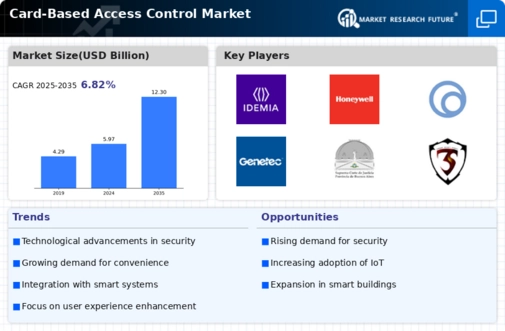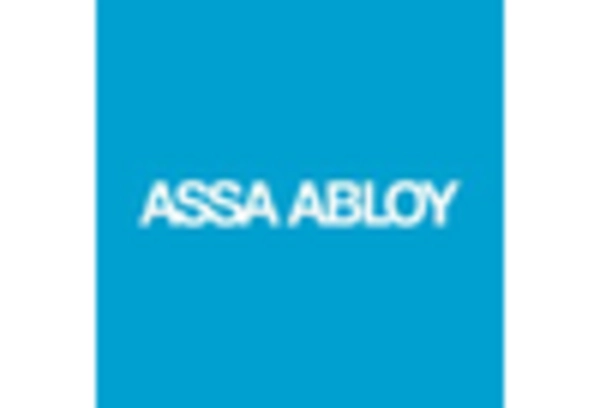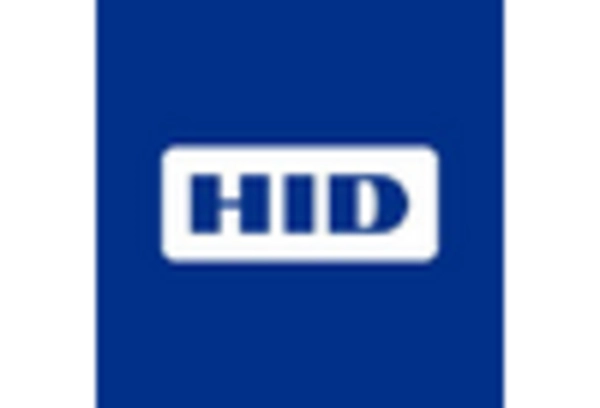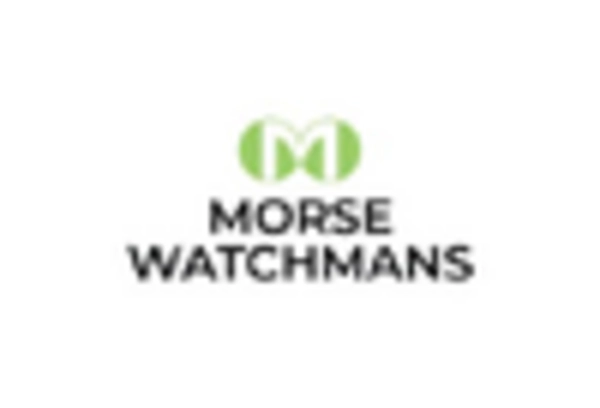Regulatory Compliance
Regulatory compliance is increasingly influencing the Card-Based Access Control Market. Organizations are mandated to adhere to various security regulations and standards, which necessitate the implementation of effective access control measures. In 2025, the market is likely to benefit from the enforcement of stricter regulations across sectors such as finance, healthcare, and government. These regulations often require the use of advanced access control systems to safeguard sensitive data and ensure accountability. Consequently, businesses are investing in card-based solutions that not only meet compliance requirements but also enhance overall security posture, thereby propelling the growth of the Card-Based Access Control Market.
Rising Security Concerns
The Card-Based Access Control Market is experiencing a surge in demand due to escalating security concerns across various sectors. Organizations are increasingly prioritizing the protection of sensitive information and physical assets, leading to a heightened adoption of access control systems. In 2025, the market is projected to reach a valuation of approximately 10 billion USD, reflecting a compound annual growth rate of around 8%. This growth is driven by the need for robust security measures in commercial, residential, and industrial environments. As threats evolve, businesses are compelled to invest in advanced card-based systems that offer enhanced security features, thereby propelling the Card-Based Access Control Market forward.
Technological Advancements
Technological advancements play a pivotal role in shaping the Card-Based Access Control Market. Innovations such as biometric integration, cloud-based solutions, and mobile access technologies are transforming traditional access control systems. The incorporation of these technologies not only enhances security but also improves user convenience and operational efficiency. In 2025, it is anticipated that the market will witness a significant shift towards smart card solutions, which are expected to account for a substantial share of the overall market. This trend indicates a growing preference for systems that offer seamless integration with existing infrastructure, thereby driving the Card-Based Access Control Market to new heights.
Growing Demand for Contactless Solutions
The growing demand for contactless solutions is significantly impacting the Card-Based Access Control Market. As organizations seek to minimize physical contact and enhance user convenience, contactless card systems are becoming increasingly popular. This trend is particularly evident in sectors such as retail, hospitality, and transportation, where efficiency and speed are paramount. In 2025, the market is expected to see a notable increase in the adoption of contactless access control systems, which are projected to account for a considerable share of the overall market. This shift towards contactless technology not only improves user experience but also aligns with the evolving preferences of consumers, thereby driving the Card-Based Access Control Market.
Increased Investment in Smart Infrastructure
Increased investment in smart infrastructure is a key driver of the Card-Based Access Control Market. As cities and organizations strive to enhance operational efficiency and security, there is a growing emphasis on integrating smart technologies into access control systems. This trend is particularly pronounced in urban development projects, where smart card solutions are being deployed to manage access to public spaces and facilities. In 2025, the market is projected to benefit from substantial investments in smart infrastructure, which are expected to create new opportunities for card-based access control systems. This focus on modernization and innovation is likely to propel the Card-Based Access Control Market to new levels of growth.


















Leave a Comment